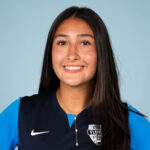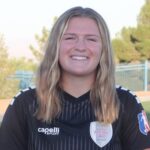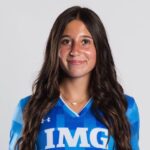TSW Q&A: NASL commish aiming for momentum, growth in year two
By Charles Boehm and Abby Fazio
First survive, then succeed.
Like many of its forebears, that’s the approach being taken by the North American Soccer League, the second-tier professional league which kicked off its second season last weekend. Born out of a contentious split between league officials and club owners in the United Soccer Leagues’ now-defunct First Division in late 2009, the NASL didn’t truly enter existence until last year, as a 2010 compromise brokered by U.S. Soccer merged its teams with the remaining USL-1 members for one season due to sanctioning issues.
Now the NASL, named in tribute to the iconic but ultimately doomed league that put soccer on the American sporting map in the 1970s, has a year under its belt – and hopes to build something much bigger and more sustainable.
Infighting and financial instability have killed off countless lower-division soccer endeavors in the United States over the years, and with only eight teams scattered across an enormous continent, the costs and difficulties facing the NASL are substantial. But most clubs restrain salary expenses by offering seven-month (season-long) contracts instead of year-long deals, and loan signings of talented young MLS players have become commonplace.
Opening-weekend matches in Minnesota, Ft. Lauderdale, Puerto Rico and Atlanta were well-attended and those in and around the NASL are optimistic, none more so than league commissioner David Downs. The Soccer Wire caught up with Downs earlier this year to talk about the challenges and opportunities facing the NASL.
The Soccer Wire: What’s the outlook for the NASL in 2012?
David Downs: We are very excited about the upcoming season. I think that the point of our first season was to establish the eyes of the fans, media, governing body and sponsors that we could actually pull this off, that we could a credible season, that our players could play at a high level, that our stadiums could have decent crowds and that the atmosphere would be fun. And I think we managed to accomplish that.
But now that we’ve got all that momentum, now that we are returning the same core of teams – although we lose a great team in Montreal [Impact] to MLS, we are replacing them with a great team in San Antonio – we need to capitalize on that momentum, put in a really good second season, and raise the bar, not as much on the field, but maybe in the back end operations. And then look to expand the league, ultimately. Because I think that eight teams, while we are very proud of our eight teams, that it probably is on the low end of where we should be, and certainly where we could be. [The NASL has already announced that a new club in Ottawa, Ontario will join the league in 2014.]
There is incredible opportunity in this country right now – if you look at the top 25 markets in the United States, between ourselves, MLS and USL Pro, only 16 of them have professional soccer. And when you think about that these are markets with populations of upwards of two million people, a lot of passion at the youth level, ability to watch world-class soccer on television – I think they all deserve and would support professional soccer.
And as a league sitting at eight teams, but playing on a national level, a real, true professional travel league, we’re the perfect opportunity to slot in there. I think MLS is probably, realistically, hitting about the peak of their capacity – certainly by the way they’re pricing franchises, they’re getting to the peak of the number of people that can pay $50-100 million to join. So the opportunity is there for us to fill in the gap, which would be a huge service to U.S. Soccer and to soccer in this country in general.
TSW: Beyond salary overhead, travel and marketing are big costs for your clubs. Do your owners have the financial heft to make this league work?
DD: I think all our owners believe that there is a business model there at our level, with national travel, that allows them to make money in the long run. In the short run as we establish our fan bases, most of our clubs will lose money. Right now on our model, we probably need between 5-6,000 fans a game, and in our league last year, Montreal was the only team that was averaging that on a paid basis. Several clubs had gates of 6,000 on an occasional basis, and some of those were comp tickets. So I think there are enough owners out there who understand that this is a model where you can build that kind of fan base, and operate on a pretty decent scale.
Our clubs have significant budgets, but it’s not so significant that you don’t have a prayer of making your money back. And it’s not unrealistic to think that in time, an Atlanta, or a Fort Lauderdale or a Tampa Bay Rowdies would grow their fan base from the 3-4,000 that are showing up to the games now, to the 5-6,000 that it would take to be profitable. Most of our owners are committed to earning that fan respect and loyalty over the next couple years, and I think they’re going to do it.
TSW: I recall one of NASL’s founding principles being a decentralized, more laissez-faire model for ownership and decision-making.
DD: I wouldn’t call it decentralized or laissez-faire, almost just the opposite in some sense. The founding clubs wanted to have a say in the operation of a centralized league. So as a league we are very actively involved in setting the parameters in how everybody plays, but in governance we’re 100% democratic. So you have a seat on the board of governors and a vote for every team in the league, and the league board of governors sets the policy that the league administers. But we have actually very high standards and we enforce them very strictly. It’s absolutely a league by the teams, for the benefit of the teams.
TSW: Do you expect increased investment? Do clubs want to shell out for higher-end players?
DD: One of the very interesting things principles of our league is that we don’t have a centralized player pool the way MLS does. Each team is individually free to scout, trial and sign their own players at whatever salary they chose to. There is no salary cap per se, other than common sense – and common sense has worked very well up to now. I don’t think anybody is interested in having a $10 million payroll and 3,000 fans. But, if someone were to say, “Gee, I think I’m going to bring in the best 18-year-old in Brazil and pay him a million dollars a year, because I think I could get $2 million worth of incremental revenue for my team, they’re free to make that decision. I don’t know that anybody is going to do quite that this year, but I envision a day in the very near future where you might want to make that choice.
The other thing of course is that our teams do retain player rights with the team. So if you were to invest in a player, maybe pay more than you typically would pay for a 17, 18, 19-year-old player, and you groom him to go to Europe or to go to MLS, you retain the [entire] sell-on fee, the transfer fee. That’s a model that I think that a lot of people from outside the United States would warm up to as potential owners.
[ +See Inside Minnesota Soccer News’ full league preview for more info about the 2012 NASL season ]











